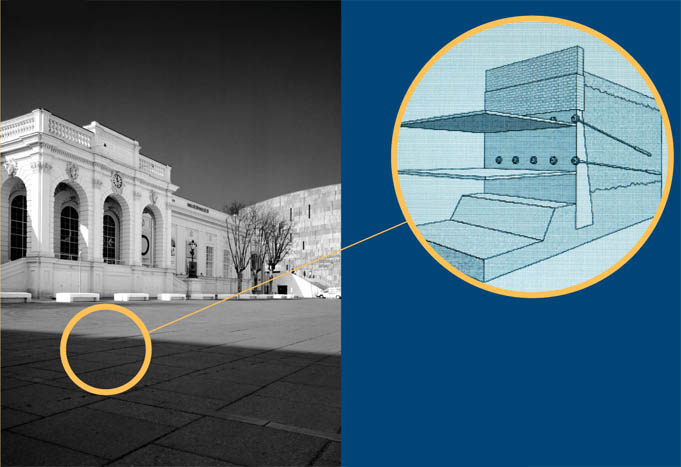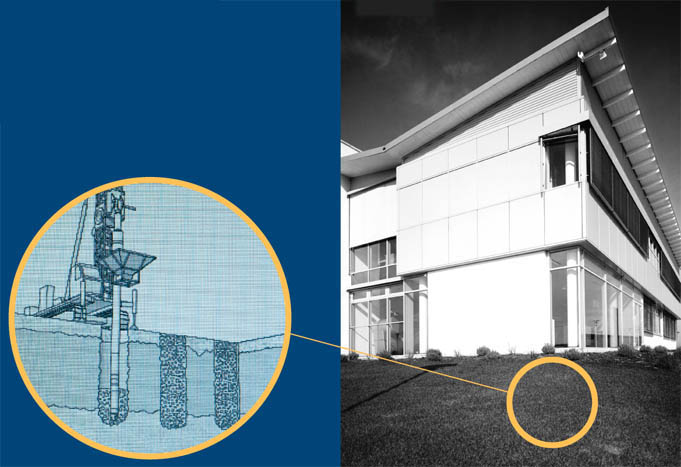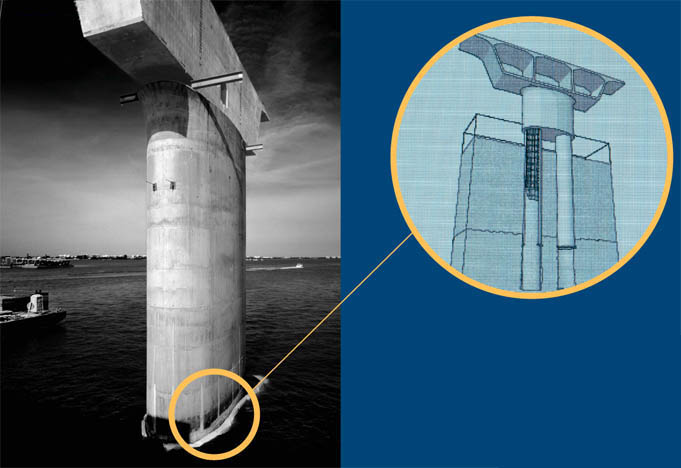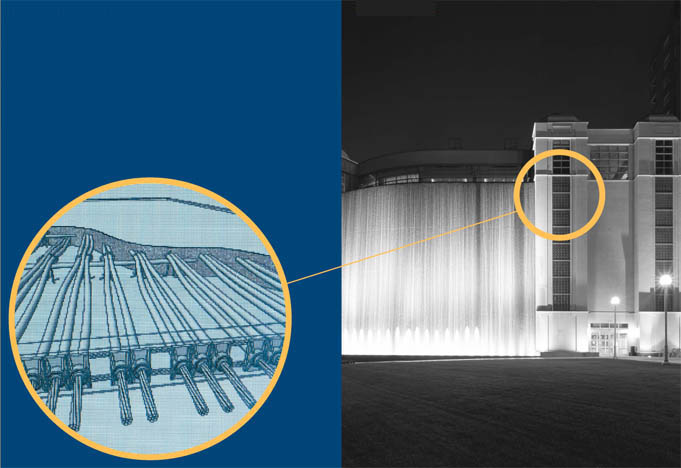
Royal riding stables constructed in 1716 formed the heart of this major construction project to accommodate six of Vienna’s main cultural institutions. Keller employed a range of ground engineering techniques on this site, including use of the Soilcrete system of anchored jet-grouting underpinning to set deeper and secure the pit of the ancient riding hall.
Process:
Soilcrete underpinning
Interlocking Soilcrete columns are commonly used
to form support walls to underpin the adjacent structure. New foundations
are thus formed from Soilcrete to enlarge or replace the existing support
system. Where retained heights are large, and soil conditions appropriate,
additional lateral support can be provided by anchoring the Soilcrete
columns.

Keller performed vibro replacement under the floor slab and footings for this 2,000 square metre office building. One of the challenges was to complete the work quickly, to enable civil engineering works to commence and reduce the overall construction time. Working in double shift, our French subsidiary completed 2,600 metres of vibro replacement in six days.
Process:
Vibro replacement
First developed by Keller in 1957, the vibro
replacement method of constructing stone columns through fill material
and weak soils to improve their load bearing and settlement characteristics
has been used on an increasing scale to provide economic and technically
sound solutions to a wide range of geotechnical and foundation problems.

Kensal House in west London was built in 1937 for the Gas Light and Coke Company to rehouse people from deprived urban areas. Deliberately painted white to contrast with the inner city surroundings, Kensal House was hailed as a prototype for modern living. The London Borough of
Kensington and Chelsea employed Makers to refurbish the
interior and exterior of the building, including the repair of all concrete structures.
Process: Concrete repair
The concrete repair process typically involves
removal of defective carbonated concrete; treatment of any exposed reinforcing
steel; reinstatement of concrete with repair mortar; application of a
corrosion inhibitor to protect the repair area and surrounding concrete
from future corrosion; application of protective levelling mortars to
restore a level profile; and application of a final protective coating.

This new high level, fixed span bridge crossing the inter-coastal waterway in Sarasota will replace a bascule bridge to improve the flow of road and water traffic. To support the bridge’s ten piers, Case Atlantic worked from barges to construct 20 108-inch diameter caissons. Permanent casing was set through water, then driven through sand and seated into the lower limestone layer.
Process: Caissons
Caissons, also known as drilled shafts, are deep
foundation structural elements capable of supporting highly concentrated
loads. Although caissons have been in regular use since the mid-1950’s,
it is only recently that the construction community has seen a resurgence
in caisson specification, as owners and engineers recognise the reliability,
versatility and economic advantages of this type of foundation system.

Center Commons Building
This facility is part of the world’s largest teaching medical centre, employing 65,000 people and teaching 90,000 students each year. The 26,750 square metre structure features an exterior waterfall and accommodates parking for 500 vehicles, together with restaurants and retail shops over seven floors. More than 87,000 metres of unbonded post-tension cable were installed by Suncoast for reinforcement of the floor slabs.
Process:
Post-tension cable systems
The post-tension cable system is an advanced
method of concrete reinforcement used in slab on grade foundations
and structural spans. The system comprises plastic sleeved steel strand
with anchors which are cast into the concrete
and subsequently ‘tensioned’ using hydraulic pumps.
Once tensioned, this method of reinforcement concentrates the inherent
compressive strength and durability of concrete, whilst providing exceptional
economy and simplicity of construction.